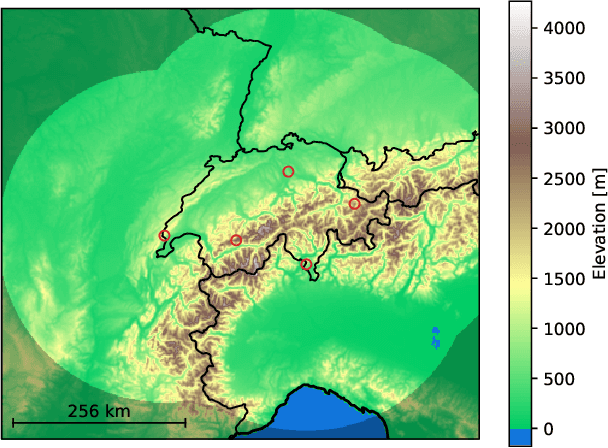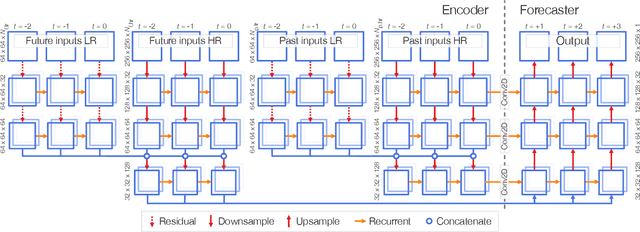Ulrich Hamann
Latent diffusion models for generative precipitation nowcasting with accurate uncertainty quantification
Apr 25, 2023Abstract:Diffusion models have been widely adopted in image generation, producing higher-quality and more diverse samples than generative adversarial networks (GANs). We introduce a latent diffusion model (LDM) for precipitation nowcasting - short-term forecasting based on the latest observational data. The LDM is more stable and requires less computation to train than GANs, albeit with more computationally expensive generation. We benchmark it against the GAN-based Deep Generative Models of Rainfall (DGMR) and a statistical model, PySTEPS. The LDM produces more accurate precipitation predictions, while the comparisons are more mixed when predicting whether the precipitation exceeds predefined thresholds. The clearest advantage of the LDM is that it generates more diverse predictions than DGMR or PySTEPS. Rank distribution tests indicate that the distribution of samples from the LDM accurately reflects the uncertainty of the predictions. Thus, LDMs are promising for any applications where uncertainty quantification is important, such as weather and climate.
Thunderstorm nowcasting with deep learning: a multi-hazard data fusion model
Nov 02, 2022Abstract:Predictions of thunderstorm-related hazards are needed in several sectors, including first responders, infrastructure management and aviation. To address this need, we present a deep learning model that can be adapted to different hazard types. The model can utilize multiple data sources; we use data from weather radar, lightning detection, satellite visible/infrared imagery, numerical weather prediction and digital elevation models. It can be trained to operate with any combination of these sources, such that predictions can still be provided if one or more of the sources become unavailable. We demonstrate the ability of the model to predict lightning, hail and heavy precipitation probabilistically on a 1 km resolution grid, with a time resolution of 5 min and lead times up to 60 min. Shapley values quantify the importance of the different data sources, showing that the weather radar products are the most important predictors for all three hazard types.
Seamless lightning nowcasting with recurrent-convolutional deep learning
Mar 15, 2022



Abstract:A deep learning model is presented to nowcast the occurrence of lightning at a five-minute time resolution 60 minutes into the future. The model is based on a recurrent-convolutional architecture that allows it to recognize and predict the spatiotemporal development of convection, including the motion, growth and decay of thunderstorm cells. The predictions are performed on a stationary grid, without the use of storm object detection and tracking. The input data, collected from an area in and surrounding Switzerland, comprise ground-based radar data, visible/infrared satellite data and derived cloud products, lightning detection, numerical weather prediction and digital elevation model data. We analyze different alternative loss functions, class weighting strategies and model features, providing guidelines for future studies to select loss functions optimally and to properly calibrate the probabilistic predictions of their model. Based on these analyses, we use focal loss in this study, but conclude that it only provides a small benefit over cross entropy, which is a viable option if recalibration of the model is not practical.
 Add to Chrome
Add to Chrome Add to Firefox
Add to Firefox Add to Edge
Add to Edge